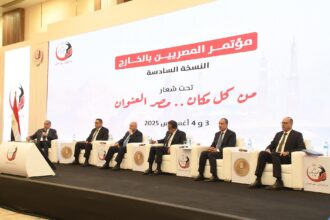The Embassy of Switzerland in Egypt will host a solo exhibition by the Swiss-Italian artist Sighanda From 20 October to 30 November, as part of “Settimana della Lingua Italiana nel Mondo” (Italian Language Week in the World from 14 to 2o October).
The exhibition, prepared in collaboration with the Italian Cultural Institute in Cairo, also comes within the context of the series of activities organized by the Embassy in celebration of the 90th anniversary of the Friendship Treaty between Switzerland and Egypt. On 13 November, the exhibition will be relocated to the Don Bosco Salesian Institute in Cairo.
The exhibition offers a unique perspective on Egypt, as seen through the eyes of Sighanda, inspired by her journeys between the Giza plateau, the necropolis of Saqqara, and visits to the two museums in Cairo and Turin. It showcases Sighanda’s drawings, notebooks, and plates, reflecting her philosophy of using the carnet de voyage, an ancient practice she revitalizes through her art. Sighanda seeks to engage directly with Egyptian culture, both ancient and contemporary, by visiting the original sites of the pharaohs’ tombs on several occasions.
The exhibition’s title, The Return to the Day, refers to a translation of the ancient Egyptian funerary text ‘The Book of the Dead’, a collection of writings that, along with other papyrus fragments like the Mercer Diary (at the Egyptian Museum in Cairo), are considered precursors to the modern carnet de voyage. The carnet de voyage tradition originated in the 18th century as a way to capture the culture and customs of a place through drawing. With the rise of photography in the 19th century, this practice gradually faded away. Today, Sighanda revives this ancient “modus operandi” to delve into the essence of culture and narrate its story through her crafted notes. As the exhibition’s subtitle suggests, Sighanda’s drawings and travel notebooks bring visual substance to the subjects she captures in her diaries. Created freehand and during brief sittings, these works reflect the complexity and richness of ancient Egypt.
Sighanda is a painter, musician, and cornettist. For several years, she taught painting and drawing techniques at the Michelangelo Academy of Fine Arts in Agrigento, Italy. She also attended the CEPA (Cercle Européen pour la Propagation des Arts) in Luxembourg. She graduated in engraving techniques from the Academy of Fine Arts in Florence, Italy. Since 2018, Sighanda has been a cultural mediator in Switzerland at the Lugano Museum of Contemporary Art (LAC) and the MASI Museum of Art of Italian Switzerland. In 2019, in Villemur-sur-Tarn in Occitania, France, she created a travelogue 50 meters long and 1.5 meters wide, now the largest in the world. In 2021, she was invited by the International Network of Michelin Cities to the 21st Rendez-Vous du Carnet de Voyage in Clermont-Ferrand, France. Sighanda currently lives and works between Italy and Switzerland.
True to her spirit of experimentation, Sighanda merges sound and colour in search of pure vibration and authentic forms. Much like her music, her travel notebooks follow a harmonic logic, alternating between signs and drawings. Through her depictions of landscapes, urban life, and archaeological artefacts, she also engages in self-portraiture. By composing pages and plates, she unveils her inner self, authentically expressing her emotions and experiences. The black Indian ink marks and watercolour that she uses to create her art range from light and delicate to denser and more detailed brushstrokes, evoking the intricate features of statues, amulets, pyramids, and ritual artefacts used in mummification and embalming. Funerary trousseaus and decorative motifs are carefully observed and rendered with a thoughtful, participatory approach that is both intellectually and graphically faithful and curious. These drawings, described as “almost like snapshots of traversed landscapes”, are further enriched by the emotional depth that the travelling artist brings to her expressive practice, blending it with her studio work, where the motifs, still full of life, serve as primal emotional sources.




